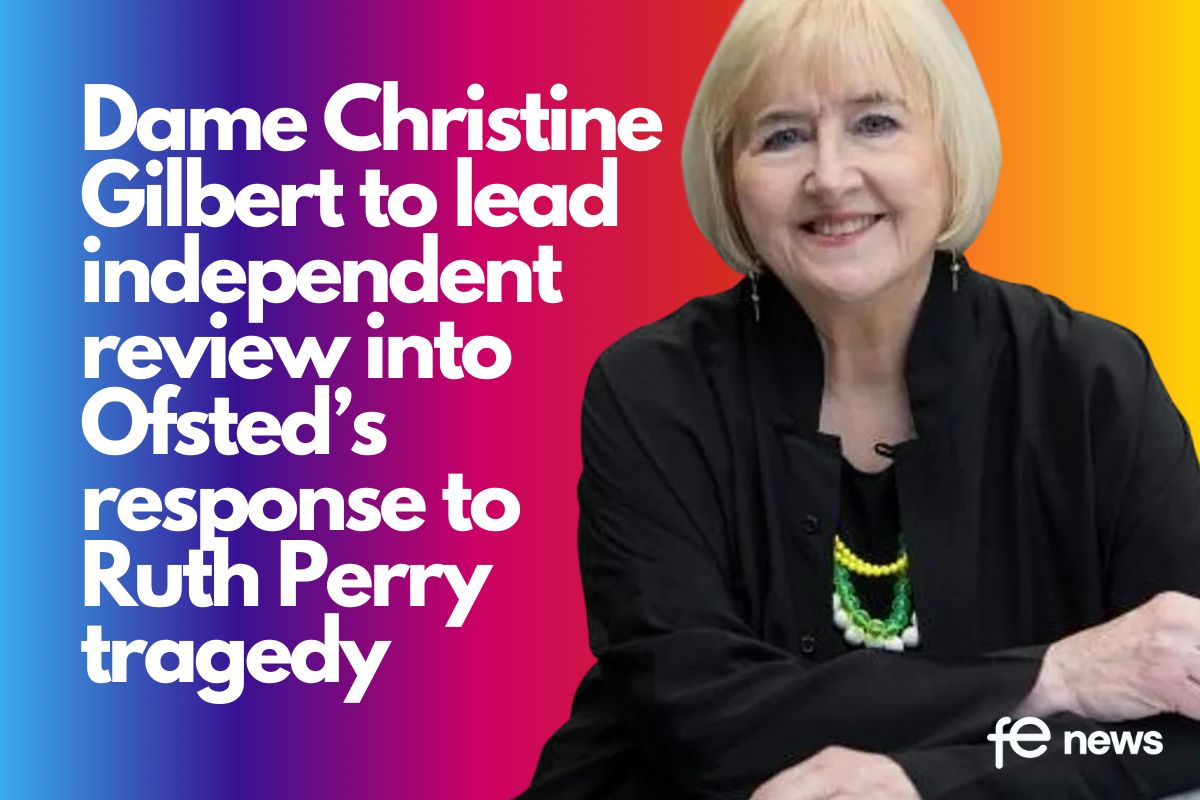Labour market statistics: “clearest signs yet” that young people and lowest paid are being hit hardest by crisis

Following the latest publication of the @ONS unemployment stats this morning, the figures showed a 649,000 drop in workers on payroll from March to June this year.
It’s critical that we act now and use all the ammunition available to provide training and jobs lifelines to those most in need.
The July Labour Force Survey, used by the ONS in its monthly labour market bulletin, was published on the 16 July 2020. The coronavirus pandemic has not yet had a significant impact on youth employment or unemployment, but there are other indicators that show it is having an impact.
On 16 July, the ONS published June 2020 figures for the number of people claiming unemployment related benefits (the unadjusted claimant count). As these figures are for June 2020, they give us a measure of how the number of claimants has changed in response to the coronavirus pandemic. In June 2020, 522,200 people aged 16-24 claimed unemployment related benefits. This was an increase of 280,400 claimants, or 116% from March 2020, when the UK lockdown began.
Note that while some of the increase in the Claimant Count will be due to people who have become unemployed, some increase will also be due to employed people who have become eligible for Universal Credit as part of the government response.
The Coronavirus Job Retention Scheme (CJRS) opened to applications on the 20 April 2020. By midnight on the 30 June 2020, around 1.8 million jobs had been furloughed through the CJRS by employees aged 16-24.
According to the Resolution Foundation, one-third of 18-24-year-old employees (excluding students) have lost jobs or been furloughed, compared to one-in-six prime-age adults 35% of non-full-time student 18-24-year-old employees are earning less than they did prior to the outbreak, compared to 23% of 25-49-year-olds.
540,000 young people aged 16-24 were unemployed in March-May 2020, an increase of 26,000 from the previous quarter and an increase of 47,000 from the year before. By historical standards, unemployment levels for young people are very low. For context, it is worth noting that the total population aged 16-24 has been declining in recent years; in the year to May 2020, it decreased by 43,000.
The number of young people in employment increased by 11,000 from the previous year, but decreased by 39,000 from the previous quarter. The number who are economically inactive (not in or looking for work) decreased by 101,000 from a year before, and small increase from the previous quarter.
The unemployment rate (the proportion of the economically active population who are unemployed) for 16-24 year olds was 12.5% in March-May 2020. This is up from 11.8% in the previous quarter and from 11.6% a year before.
The inactivity rate for young people is 37.1%. Around three quarters of young people who are economically inactive are in full-time education.

Youth claimant count
In June 2020, 522,200 people aged 16-24 claimed unemployment related benefits. This was an increase of 280,400 claimants from March 2020, when the UK lockdown began. This represents an increase of 116%.
Youth Unemployment across Europe
The UK youth unemployment rate was 10.9%, compared to 14.0% for the European Union as a whole.
Sector Response
 Kirstie Donnelly MBE, CEO at City & Guilds Group, commented:
Kirstie Donnelly MBE, CEO at City & Guilds Group, commented:
“With unemployment already on the rise, and set to skyrocket to as many as 4 million people by the end of the year, it’s critical that we act now and use all the ammunition available to provide training and jobs lifelines to those most in need.
“The interventions outlined by the Chancellor in last week’s Summer Statement are a step in the right direction, but there is still much more that can be done. As well as supporting young people, we need to ensure that people of all ages, particularly those from lower socio-economic groups, or people displaced from industries badly impacted by the pandemic have the opportunities to gain the new skills they need to access meaningful employment.
“The funding needed to make this happen already exists. In our Recovery & Resilience report, published this month, we called on the Government to urgently redirect existing skills funding to ensure that the budgets set aside for further education are being allocated in the right way, with the right focus to support skills development that promotes both employment and social mobility. We know skills development will help pave the way to economic recovery and we have the means to make this happen. This is our ‘Act Now’ moment.”
 Sam Windett, Director of Policy at Impetus, says:
Sam Windett, Director of Policy at Impetus, says:
“Today’s labour market statistics are a mixed bag, but for young people it’s clear the situation is getting worse. Unemployment for young people has increased again, with a rise in benefit claims for 18-24 year olds whilst all other age groups fall – and we know many young people don’t claim, so the real figures are even higher. As the furlough scheme unwinds and many finish their education this month, the numbers will rise further in the months ahead. We need to work quickly and together across sectors to ensure the government’s Opportunity Guarantee doesn’t become a missed opportunity for the young people who need it.”
 Tony Wilson, Director, Institute for Employment Studies, said:
Tony Wilson, Director, Institute for Employment Studies, said:
“This morning’s figures show clearly that the jobs market continued to weaken during the lockdown and is showing no signs yet of recovery. Even with the emergency measures to protect jobs and incomes, paid employment has already fallen by around a million since March and this is only going to get worse in the coming months.
“Today’s data showed a welcome if small improvement in the numbers claiming unemployment-related benefits after two months of record-breaking rises. This appears to be a result of self-employed income support payments being made in May, and so lifting many new claimants back out of the claimant count.
“However, the numbers of young people claiming unemployment related benefits has continued to rise and today’s data gives the clearest signs yet that younger people are being hit hard by the crisis. One in seven of the youth labour force are now claimant unemployed, double the rate for older people, and the official measure of unemployment has crept up to its highest since 2017.
“Our research has also highlighted that low paid workers are bearing the brunt of this crisis – with the low paid twice as likely to have been temporarily laid off during the crisis and disproportionately likely to have lost their jobs.
“Perhaps of most concern, today’s data confirms that the hiring market has collapsed – with new starts to employment running at just half of pre-crisis levels, and vacancies falling by three fifths. A combination of continued employer uncertainty and significant spare capacity within firms as workers come back from furlough has led to a stagnant hiring market and reiterate that the government will need to act fast to implement its plan for jobs. And with more job losses likely through the autumn and winter, if hiring doesn’t start to bounce back soon then we may yet need more measures to stimulate growth.”
 Scott Parkin, Chief Executive of the IEP (the Institute of Employability Professionals) said:
Scott Parkin, Chief Executive of the IEP (the Institute of Employability Professionals) said:
“The latest figures give little comfort to those that have already lost their jobs as a result of the crisis and will concern those that are currently furloughed who may not be returning to their jobs when the Job Retention Scheme ends, estimated at over 1 million more people.
“The IEP is dedicated to supporting everyone that finds themselves out of work through our employability practitioner members who are working really hard to enable people to gain the employability skills needed to be competitive in their local Labour market and ultimately find a new job.
“We will continue to support our members to deliver high quality support to those in most need and will remain committed to making sure that, in response to the Chancellors announcement last week, we have the right number of dedicated, well trained and capable practitioners, across the UK, to rise to this challenge.”
 Elena Magrini, Senior Analyst, Centre for Cities said:
Elena Magrini, Senior Analyst, Centre for Cities said:
“The economic effect of this pandemic hasn’t impacted every part of the country equally. Today’s statistic shows that the claimant count is three times higher in Blackpool than it is in York and it’s the less prosperous places that have been hit hardest by lockdown.
“The announcements from the Chancellor last week were welcome and will help prevent mass unemployment. To avoid a lost generation of people out of work the Government must now also prioritise skills and re-training to help jobless people back into the labour market.”
 Anna Smee, Chief Executive of Youth Futures Foundation commented:
Anna Smee, Chief Executive of Youth Futures Foundation commented:
“Sadly the figure of 540,000 16 to 24 year olds registered as unemployed does not tell the whole story. Young people are less likely to apply for benefits when they exit the labour market suggesting the number of those not in education, employment or training (NEET) is actually over one million.
“Young people receiving Universal Credit will be eligible for the very welcome Kickstart scheme announced by the chancellor last week, but those who are not receiving benefits are at risk of being unable to access support into training or jobs. There is evidence that augmenting the Job Centre Plus offer with targeted outreach to young people has been successful in helping those furthest from the job market into work.
“The government has listened and is responding to our concerns for the most disadvantaged youngsters who struggle most to make the transition into employment. We hope to continue to work with government to identify proven interventions which can ensure that young people who face disadvantage, disability or discrimination are not left behind.”
 Andy Durman, Managing Director, Emsi UK said:
Andy Durman, Managing Director, Emsi UK said:
“Today’s data updates clearly reinforce the economic challenges that the Covid-19 pandemic is bringing to the UK economy. The amount of work happening in our economy is down, hiring demand remains as low as it has been for some time, and unemployment is up. Of course, much of the data relates to the period leading up to the easing of the lockdown, and furlough is still protecting a large volume of workers whilst it is unclear as yet whether they will return to employment or add to the unemployment count. It will therefore be very interesting to observe shifts in these trends over the coming months.
“The issue with much of this data is that whilst painting a challenging headline national view, there’s little action that can be driven outside of reinforcing calls for policy clarity and further investment in key services. However, real solutions to these problems happen on the ground, in local economies, and in supporting individual people and businesses. We need to dig below the surface to where the data is perhaps less conclusive, but can be helpfully indicative. The Claimant Count does give us some locally-specific sense of volumes of jobseekers, although we must be mindful that with the inclusion of Universal Credit claimants, it may in fact overestimate the scale of local unemployment. Jobseekers Allowance Claimant Count (a subset of the Claimant Count) also helps to paint a local picture, and also offers some insights as to the occupational background of jobseekers, but is likely to be an underestimate given the roll out of Universal Credit as a preferred benefit vehicle and occupational trends may be subject to data classification inaccuracy. And on the labour demand side, we must turn to analysis of online job postings to give us timely clues as to aspects of the local economy that are driving employment opportunities.
“The solution to the problem ultimately lies in matching local labour supply (unemployment) with local labour demand (employer hiring activity) and whilst the data available to us is less than perfect, complete or definitive, it can certainly ensure key agents on the ground are pointing in the right direction and responding in a timely manner as the various policies and impacts unfold in the coming months.”
 Stephen Evans, chief executive of Learning and Work Institute said;
Stephen Evans, chief executive of Learning and Work Institute said;
“We are in the midst of a labour market crisis, yet today’s headline employment and unemployment figures are barely changed. This is due both to measurement problems and to the Coronavirus Job Retention Scheme – under which 9 million workers have been furloughed – which has kept people employed for now.
“Dig below the surface, and you see signs of the unemployment crisis ahead. The number of hours worked have plummeted 16% since the start of the crisis, to the lowest level since 1997. Payroll employment is down 650,000. The claimant count is over double the level seen in March, and the biggest rises have been in areas where unemployment was highest to start with.
“The real question is what happens when the furlough scheme ends. This week the OBR projected that 15% of furloughed workers – 1.4 million people – will not be able to return to their previous jobs. The Government must look at a flexible extension to the scheme, and put in place urgent support for those at risk of losing their jobs.”
Some key findings from today’s new ONS labour market stats:
While headline employment rate has barely changed, hours worked have plummeted.
Average hours worked are down 17% on the last quarter, with 175k fewer hours worked each week. Lowest levels since 1997 pic.twitter.com/MjfvKNwB6z
— Learning and Work Institute (@LearnWorkUK) July 16, 2020
Documents
Commons Research Briefing SN05871 by Authors: Andy Powell, Brigid Francis-Devine, Niamh Foley: The Youth unemployment statistics paper contains unemployment information for the period between March and May 2020. More information can be found in the Library briefing Coronavirus: Impact on the labour market.
Additional economic analysis of the latest UK labour market headline statistics and long-term trends for July 2020.
Labour market economic commentary: July 2020
Estimates of employment, unemployment, economic inactivity and other employment-related statistics for the UK.
UK labour market: July 2020
Regional, local authority and Parliamentary constituency breakdowns of changes in UK employment, unemployment, economic inactivity and other related statistics.
Labour market in the regions of the UK: July 2020
Details
Official statistics are produced impartially and free from political influence.












Responses